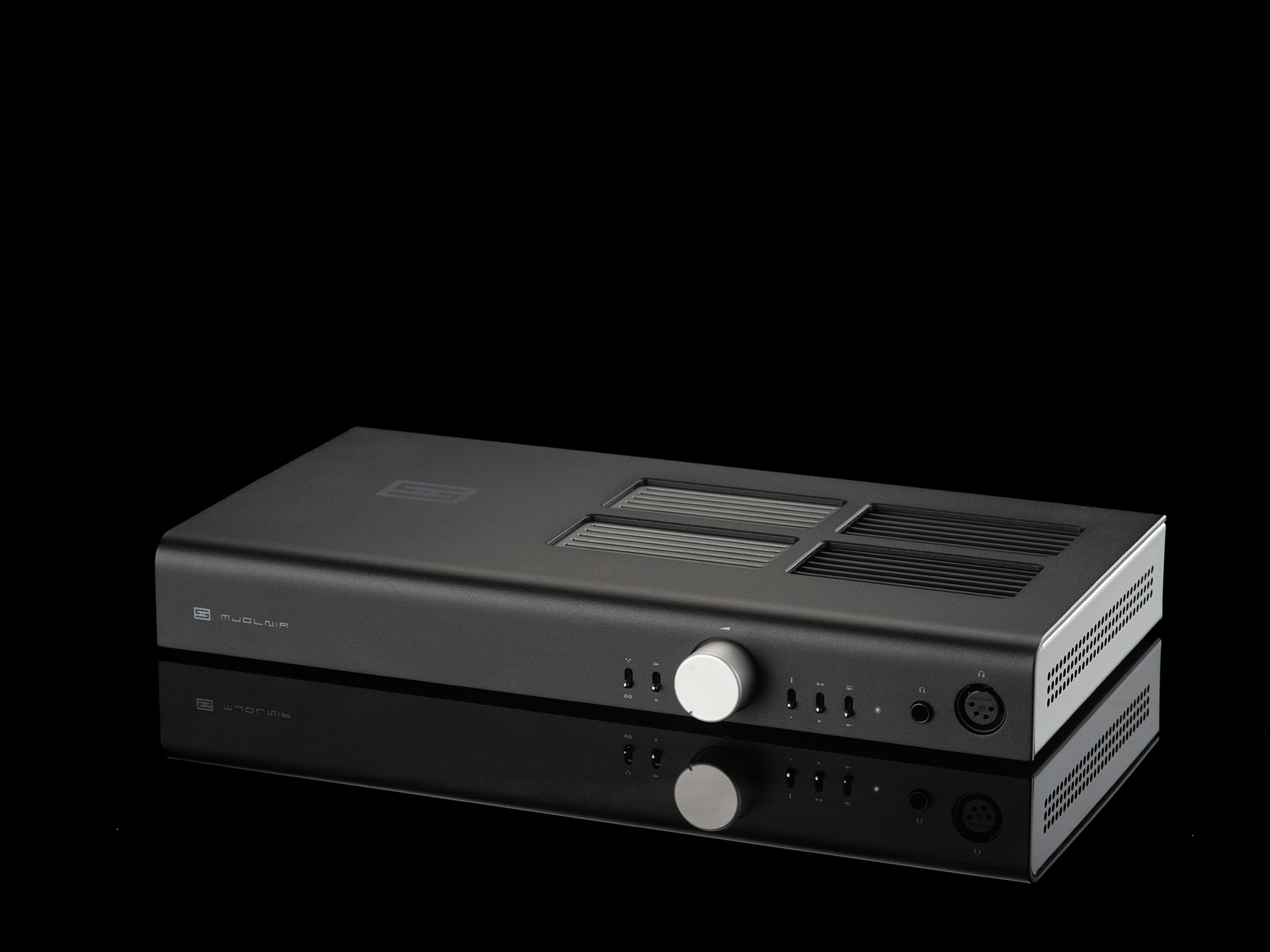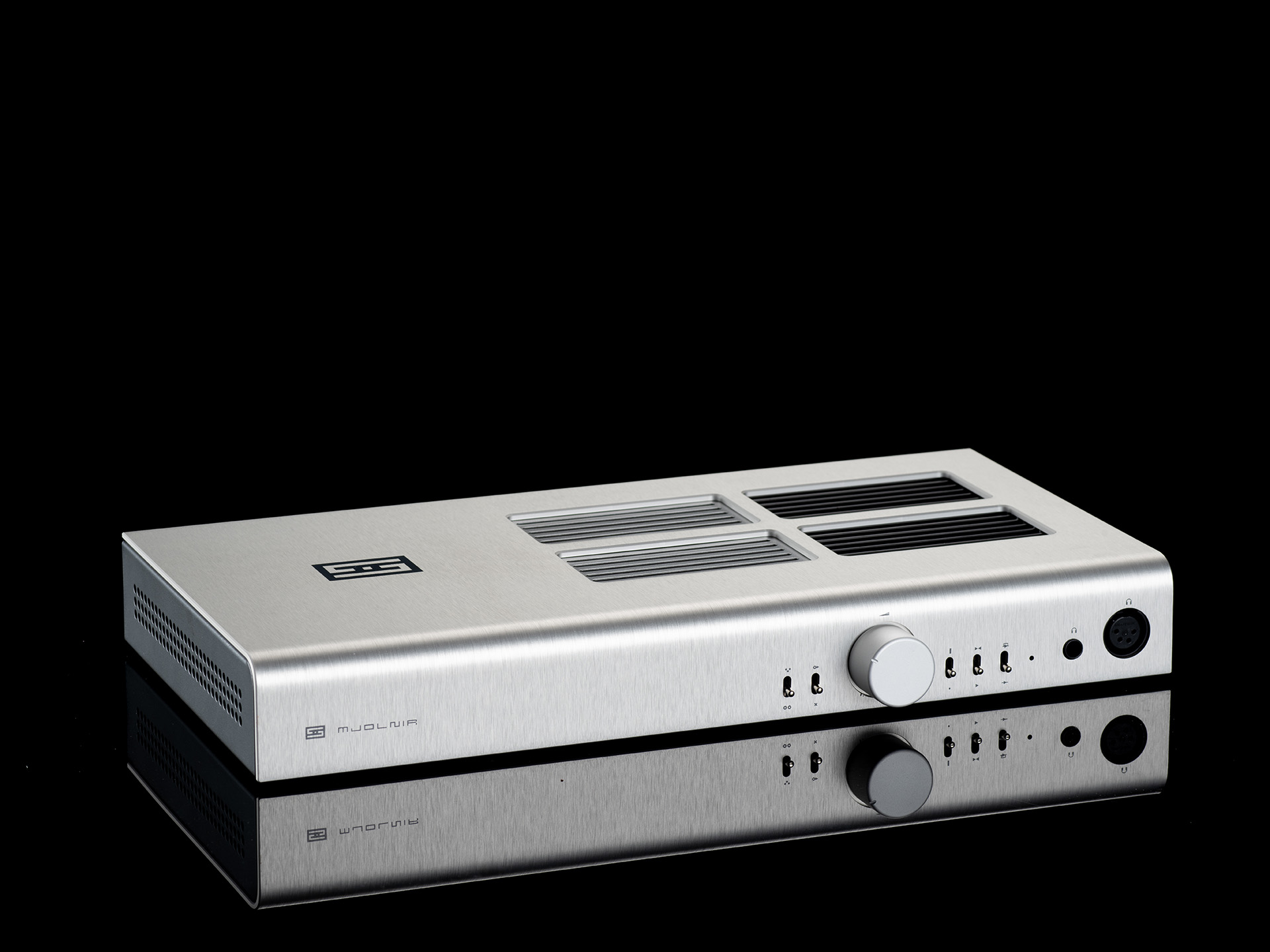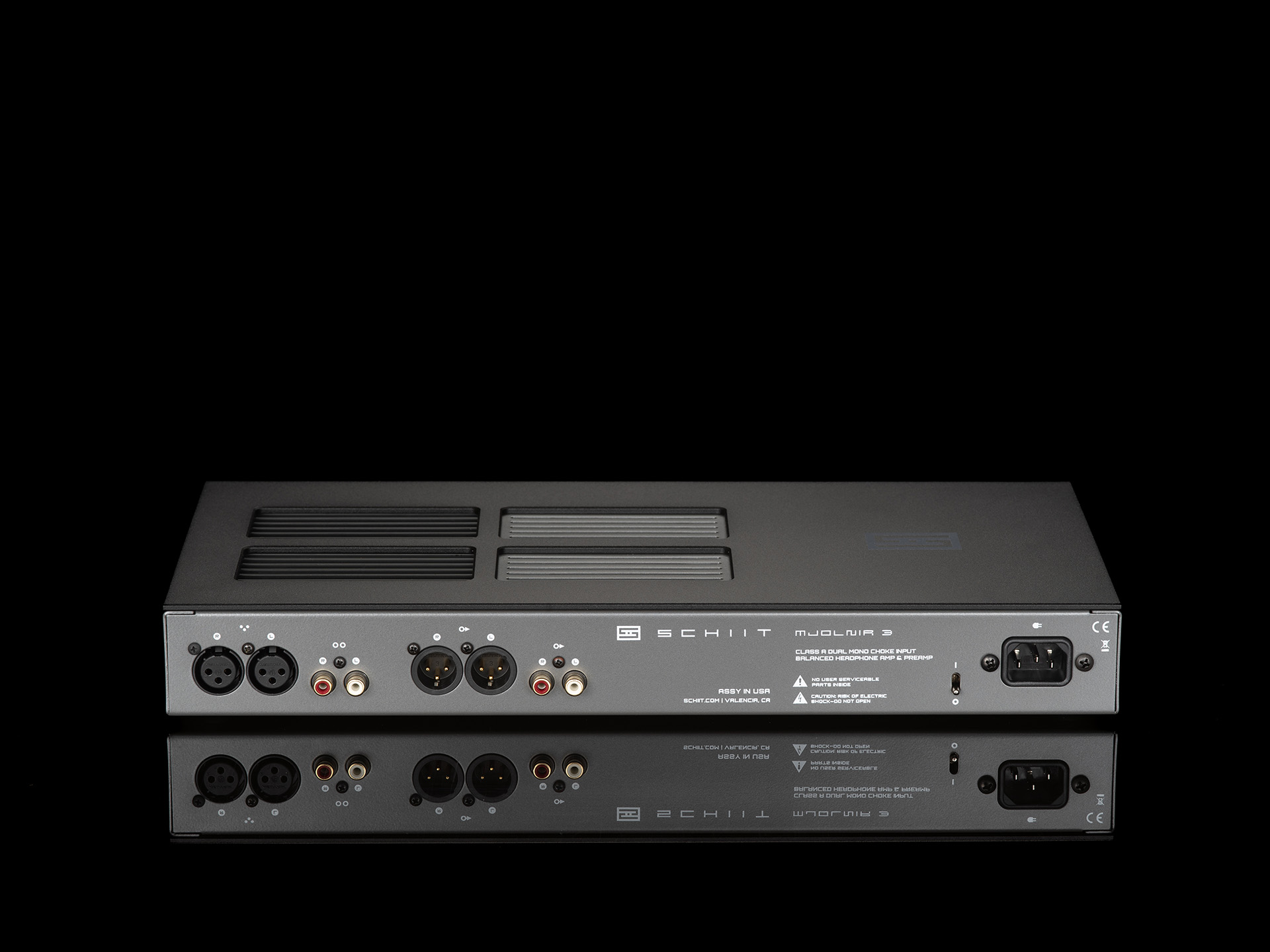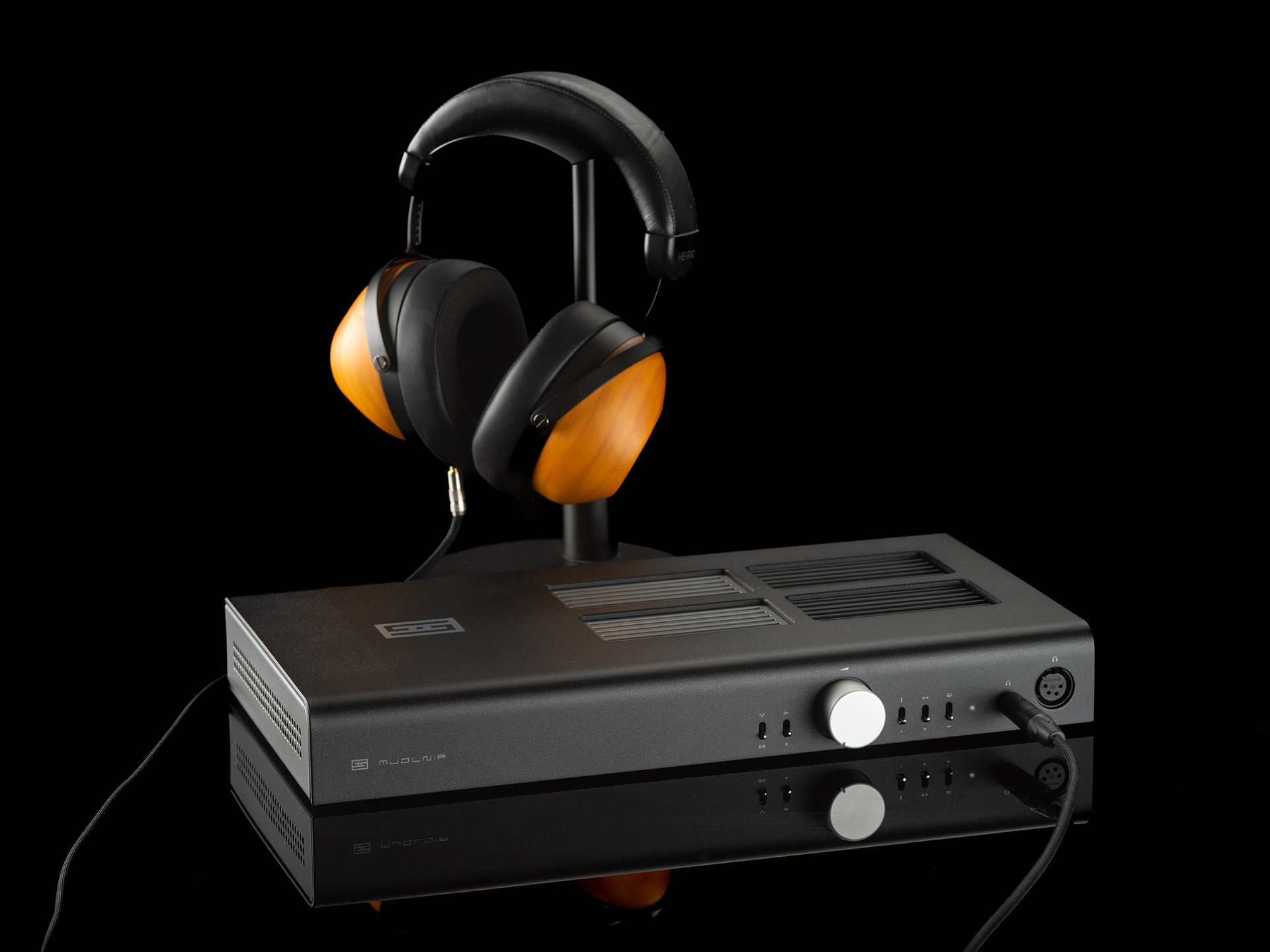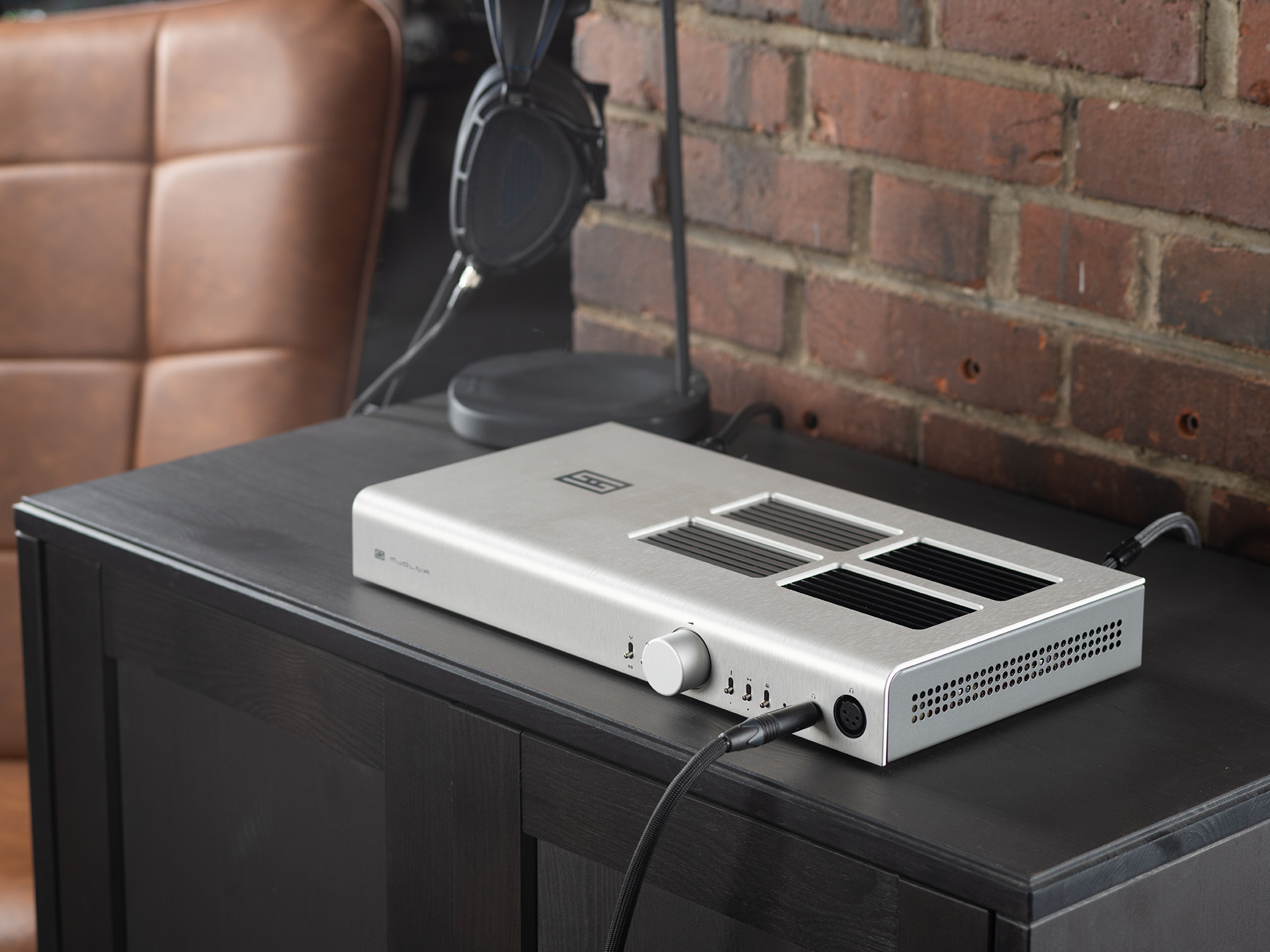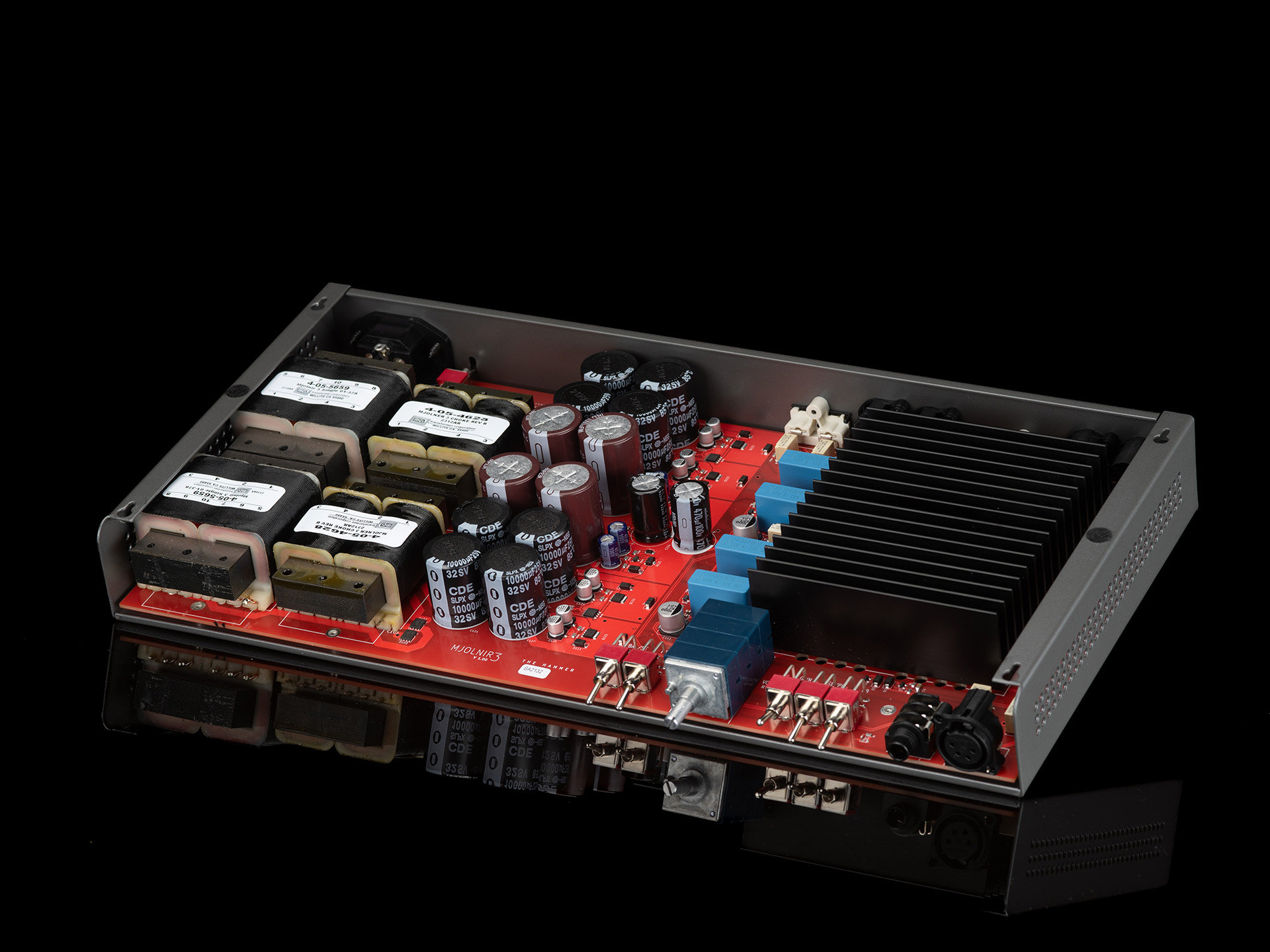Frequency Response: 20Hz-20Khz, +/-0.01db, 2Hz-700KHz, -3dB
Balanced Headphone Output:
Maximum Power, 32 ohms: 2W RMS per channel
Maximum Power, 300 ohms: 1W RMS per channel
THD: <0.015%, 20Hz-20KHz, at 4V RMS, 300 ohms
IMD: <0.02%, CCIF, at 4V RMS, 300 ohms
THD: <0.05% 20-20kHz at 1V RMS, 32 ohms
IMD: <0.06%, CCIF, at 1V RMS, 32 ohms
SNR: >110db, A weighted, referenced to 4V RMS
Crosstalk: >-90dB, 20Hz-20kHz
Output Impedance: Less than 0.25 ohms
Single-Ended Headphone Output:
Maximum Power, 32 ohms: 1W RMS per channel
Maximum Power, 300 ohms: 500mW RMS per channel
THD: <0.025%, 20Hz-20KHz, at 2V RMS, 300 ohms
IMD: <0.03%, CCIF, at 4V RMS, 300 ohms
THD: <0.1% 20-20kHz at 1V RMS, 32 ohms
IMD: <0.15%, CCIF, at 2V RMS, 32 ohms
SNR: >98db, A weighted, referenced to 2V RMS
Crosstalk: >-85dB, 20 Hz-20KHz, 300 ohms
Output Impedance: Less than 0.13 ohms
Input Impedance: 50K ohms
Gain (balanced input): 2 (6dB) or 8 (18dB)
Gain (SE input): 1 (0dB) or 4 (12dB)
Inputs: Balanced XLR and Single-Ended RCA, relay switched
Outputs: Balanced headphone (4-pin XLR), single-ended headphone (1/4” TRS), switchable balanced and single-ended line preamp
Gain Stage: Equipoise™ fully discrete, high voltage, differential zero feedback single-ended or push-pull class A, DC in and out; selectable feedback and gain independent from feedback; 16 10A bipolar NPN output devices per channel
Power Supply: Full dual mono, choke input, 2 48VA transformers and 2 chokes, separate 100V front end rail for each channel, 100% discrete regulation with over 20,000uF filter capacitance per channel.
Power Consumption: 50W typical
Size: 16” x 8” x 2”
Weight: 16 lbs

